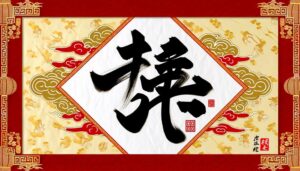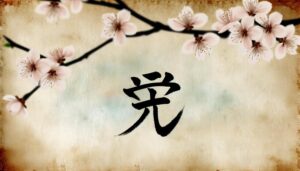What Is the Chinese Fire Symbol?
The Chinese symbol for fire, 火 (huǒ), is steeped in rich history and cultural significance. Originating from ancient oracle bone inscriptions, it has evolved through various script forms, reflecting broader changes in Chinese writing.
Historically, fire was considered a life-sustaining force and used in rituals to interpret cosmic will. Culturally, the symbol embodies transformation, destruction, warmth, and enlightenment, and it is pivotal in Five Elements theory, associating with the heart and small intestine in traditional medicine.
These elements reveal its profound role throughout Chinese civilization. Discover how this elemental symbol continues to shape language and cultural paradigms.
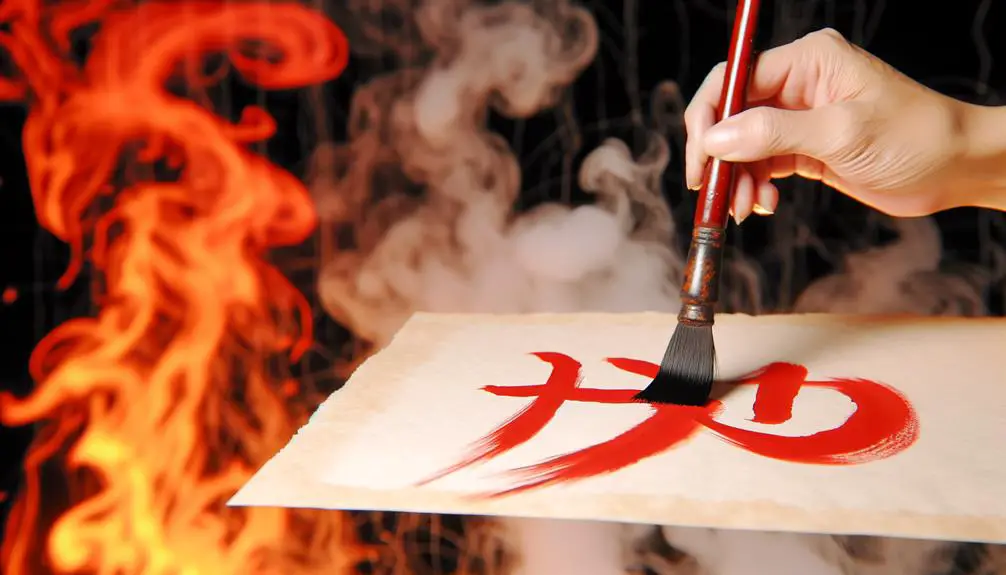
Key Takeaways
- The Chinese character for fire is 火 (huǒ).
- It originated from ancient oracle bone inscriptions used in rituals.
- The character evolved from pictographic forms to standardized script.
- Fire symbolizes transformation, destruction, warmth, and enlightenment.
- In modern language, it denotes intensity, passion, and dynamic energy.
Origins of the Fire Symbol
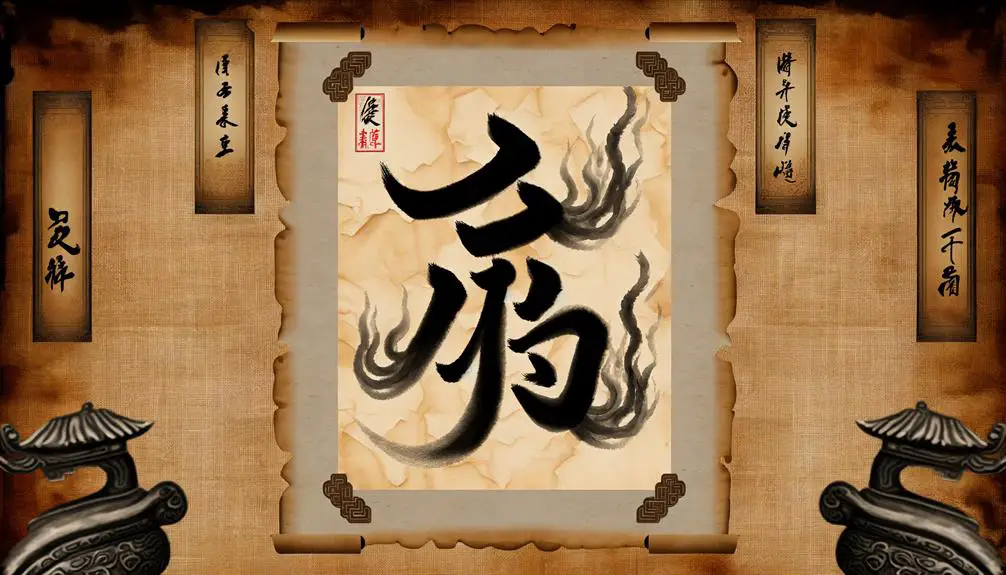
The origins of the fire symbol in Chinese culture can be traced back to ancient oracle bone inscriptions from the Shang Dynasty, where it was used not only as a representation of the element but also as a significant motif in rituals and divination practices.
This early use underscores the profound reverence for fire as both a life-sustaining force and a powerful, potentially destructive entity. The symbol's presence in divination reveals its role in interpreting cosmic will and seeking guidance. Its depiction on oracle bones, used for pyromantic readings, highlights fire's dual role in spiritual and practical domains.
Therefore, fire was integral in shaping early Chinese cosmology, influencing both daily life and metaphysical beliefs, demonstrating its deep-rooted cultural significance.
Evolution of the Character
Tracing the evolution of the Chinese character for fire, 火 (huǒ), reveals a fascinating journey from its earliest pictographic forms to its modern standardized script, reflecting broader changes in Chinese writing and cultural practices.
Initially, the character resembled a simple depiction of flames, emphasizing its elemental nature. Over centuries, the character underwent significant transformations, particularly during the shift from Oracle Bone Script (circa 1200-1050 BCE) to Seal Script (circa 221-206 BCE) and eventually to the Regular Script used today.
Each transformation streamlined and standardized the character, making it more abstract yet easier to write. This evolution mirrors the standardization efforts in Chinese script development, influenced by administrative needs and cultural shifts towards more sophisticated forms of communication.
Cultural Significance
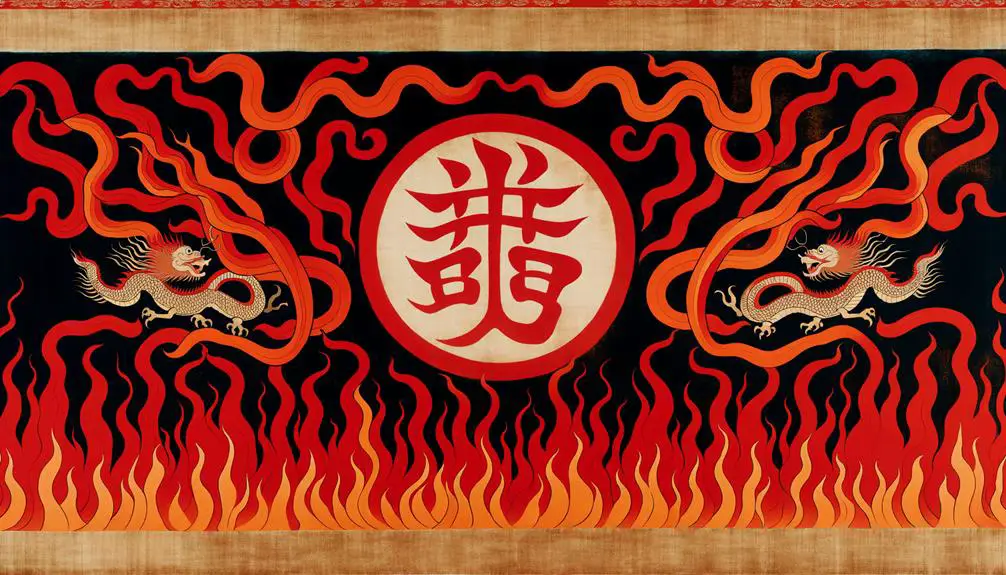
Embedded deeply within Chinese culture, the character for fire, 火 (huǒ), symbolizes not only one of the essential classical elements but also a myriad of concepts ranging from transformation and destruction to warmth and enlightenment.
Historically, fire has been pivotal in Chinese civilization, playing a significant role in cooking, metalworking, and rituals.
Culturally, 火 (huǒ) is associated with the South and summer in the traditional Five Elements (Wuxing) theory, representing dynamism and energy. It also signifies passion and creativity, embodying the human spirit's fervor and drive.
In traditional medicine, fire governs the heart and small intestine, emphasizing its essential role in maintaining life and health.
Therefore, 火 (huǒ) is a potent symbol of both physical and metaphysical significance.
Fire in Chinese Mythology
In Chinese mythology, fire is a powerful force woven into the fabric of creation myths, legendary tales, and ancient folklore, symbolizing both the destructive and regenerative aspects of nature. Fire is often personified through deities and mythical figures, reflecting its dual nature.
- Zhu Rong, the god of fire, is depicted as maintaining balance between fire's creative and destructive powers.
- The Great Flood myth, where fire played a role in the chaos before the floodwaters receded.
- Nüwa, the goddess who repaired the heavens, used fire to forge the stones she used.
- Hou Yi, an archer who saved the world by shooting down nine of the ten suns to prevent the earth from burning.
- Fire's role in alchemy and the pursuit of immortality in Daoist traditions.
These narratives underscore fire's profound cultural significance and its intrinsic role in shaping ancient Chinese worldview.
Uses in Modern Language

The Chinese character for fire (火, huǒ) permeates modern language, symbolizing not only the elemental force but also embodying various cultural idioms, proverbs, and expressions that reflect its historical and cultural significance.
In idiomatic usage, 火 is often associated with intensity and passion; for instance, the phrase 火上加油 (huǒ shàng jiā yóu) means to add fuel to the fire, signifying the act of exacerbating a situation. Additionally, 火爆 (huǒ bào) describes a fiery temper, while 热火朝天 (rè huǒ cháo tiān) conveys bustling activity.
These expressions highlight fire's symbolic role in representing both positive and negative extremes, illustrating its profound impact on Chinese linguistic and cultural paradigms.
Symbolism in Art and Literature
Beyond its linguistic influence, the symbol for fire (火, huǒ) holds a prominent place in Chinese art and literature, where it frequently embodies themes of transformation, destruction, and rebirth, reflecting its deep-rooted cultural and historical resonance.
Historically, fire has been a powerful motif symbolizing:
- Transformation: Fire's ability to change substances, representing personal and societal metamorphosis.
- Destruction: Its destructive power underscores narratives of loss and renewal.
- Rebirth: Echoing the phoenix's rise from ashes, fire symbolizes renewal and new beginnings.
- Energy and Vitality: It signifies life force and dynamism in artistic expressions.
- Spiritual Enlightenment: Often portrayed as a purifier, guiding one to higher states of consciousness.
These varied symbolisms underscore fire's multifaceted role in conveying profound human experiences and philosophical concepts.
Conclusion
To sum up, the Chinese symbol for fire, '火' (huǒ), embodies a rich tapestry of historical evolution and cultural significance.
From ancient origins to its modern applications, this character symbolizes both creation and destruction.
Reflecting deeply in mythology, language, art, and literature, it serves as a tribute to the adage, 'Where there's smoke, there's fire.'
This multifaceted symbol underscores its enduring presence and importance within the cultural and historical context of Chinese civilization.


